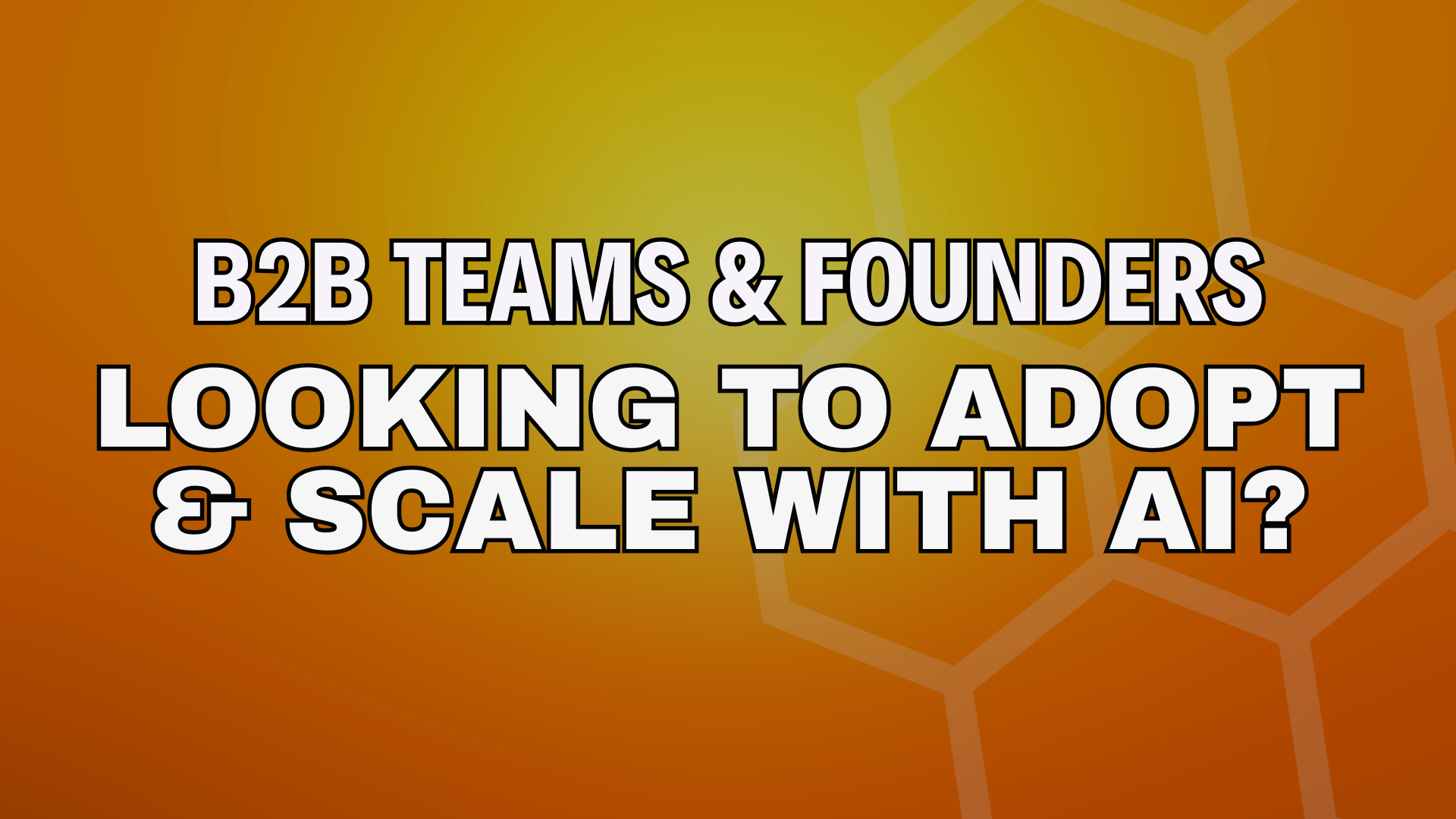Building Multi‑format Content Ecosystems That Rank on AI & Search
Table of contents
Why Traditional SEO Is Fading (And AI Search Is Taking Over)
What Is a Multi‑Format Content Ecosystem?
The New Ranking Game: LLMs, Semantic Relevance & Topical Depth
How to Build a Multi‑Format Ecosystem Around Your ICP and GTM Strategy
The 3 Pillars: Structure, Substance & Syndication
Real-World Example: From YouTube to LinkedIn to Google to ChatGPT
How Hyve Engineers Ecosystems That Actually Convert
The Brand Magnet: Fueling Your Content with Strategic Video
FAQs
Why Traditional SEO Is Fading (And AI Search Is Taking Over)
Google isn't the only gatekeeper anymore. With the rise of AI-powered search (think ChatGPT, Perplexity, and Claude), the game has changed. These LLMs don’t just rank based on backlinks and keyword stuffing—they prioritize context, clarity, and cohesive information ecosystems.
So if you're still publishing content in silos—one blog here, a YouTube video there, a LinkedIn post over there—you’re not just invisible. You’re irrelevant.
TL;DR: Ranking now means being discoverable across both traditional search engines and AI models.
What Is a Multi‑Format Content Ecosystem?
It’s more than omnichannel. A multi-format content ecosystem is a strategically linked web of content—written, visual, and video—engineered to dominate both traditional SEO and AI search platforms.
Each piece isn’t a standalone asset. It’s a node in an ecosystem that reinforces the same core themes, designed around:
Your ideal customer persona (ICP)
Your go-to-market motion
And your industry’s language, problems, and queries
Imagine your blog ranks on Google. Your YouTube video on the same topic pops up in ChatGPT. And your carousel gets repurposed as a featured snippet. That’s an ecosystem. Not content chaos.
The New Ranking Game: LLMs, Semantic Relevance & Topical Depth
AI search tools don't just "crawl" your site—they summarize it. They look for content clusters, context-rich explanations, and connected topics.
Here’s what that means for you:
Your blog post should link to your YouTube videos.
Your YouTube description should link to your landing page.
Your LinkedIn posts should echo your blog’s key terms and messaging.
This cross-pollination builds semantic relevance. And in the AI era, relevance trumps authority. Every. Single. Time.
While everyone else is busy chasing likes and growing their followings, you can leverage conversion-focused content to connect directly with your ideal clients, solve their problems, and guide them toward booking a call with you.
Check it out in my video below.
How to Build a Multi‑Format Ecosystem Around Your ICP and GTM Strategy
Step 1: Reverse Engineer Buyer Intent
Start by mapping out your buyer’s journey and what they search for at each stage.
Example:
Awareness: “How do B2B agencies scale content?”
Consideration: “Video content strategy for SaaS”
Decision: “Top content agencies for B2B founders”
Now build assets around each.
Step 2: Choose Strategic Formats for Each Funnel Stage
Top of Funnel (TOFU) → YouTube, SEO Blogs, Carousels
Middle of Funnel (MOFU) → Case studies, Long-form Video, Email Sequences
Bottom of Funnel (BOFU) → Sales pages, Client onboarding guides, Comparison pages
STep 3: Interlink Content Across Formats
Each piece should:
Reference and link to other formats
Echo similar language and pain points
Be tailored to the same ICP
The 3 Pillars: Structure, Substance & Syndication
Structure: Use a consistent content architecture (headings, metadata, schema).
Substance: Ensure every asset delivers value. No fluff. Use stats, stories, and specifics.
Syndication: Distribute intentionally. Think SEO → YouTube Shorts → Email → LinkedIn → Repurposing.
Real-World Example: From YouTube to LinkedIn to Google to ChatGPT
Let’s say you create a YouTube video titled “How AI Is Transforming B2B Marketing Operations.”
Here’s what a multi-format ecosystem could look like:
SEO Blog: In-depth piece embedding the video and linking to services
LinkedIn Carousel: “3 Ways AI Streamlines Client Onboarding”
Email Campaign: Weekly drip repurposing blog sections
ChatGPT Discoverability: Optimized long-form content referenced in fine-tuned LLM prompts
This isn’t spray-and-pray. It’s systemic content architecture.
How Hyve Engineers Ecosystems That Actually Convert
At Hyve, we don’t just build content. We build conversion engines—powered by AI, SEO, and GTM alignment.
We create:
AI-optimized blogs that get surfaced in search and AI models
YouTube videos that generate leads passively through “buyer gap” storytelling
Strategic content webs that rank, nurture, and convert in sync
Our GTM Content Engine takes raw ideas and turns them into a full-funnel content system—blog, video, social, email—all interconnected and semantically aligned.
The AI SEO Growth Engine: Be Found on Google and ChatGPT
Most SEO strategies are stuck in 2015. At Hyve, we’ve engineered something different.
The AI SEO Growth Engine is our done-for-you content and discoverability system that makes your website and content rank—not just on Google, but inside AI search engines like ChatGPT, Perplexity, and Claude.
Here’s how it works:
We fully optimize your website for AI-powered search visibility—including technical SEO, schema markup, page structure, internal linking, and topical authority frameworks that help LLMs “understand” your site.
Then we create AI-optimized content every week—using real-time data from AI search tools, keyword trends, semantic search intent, and predictive AI behaviors.
We leverage proprietary AI tools and research systems to ensure your content is always discoverable and aligned with the latest algorithmic patterns. Think: Google and GPT-4 in sync.
All of this is mapped to your ICP, industry, and GTM strategy—ensuring your content doesn’t just rank. It resonates, converts, and accelerates demand.
Your competitors are still keyword stuffing. You’ll be showing up in ChatGPT’s top 3 answers—without lifting a finger.
Part of a B2B Team that feels like content and operations chaos?
Book a free call with us to audit your current systems and see how we help B2B teams adopt AI content and Ops engines to run and scale like clockwork.
FAQS
-
A content ecosystem is a strategic network of interconnected content formats (blogs, videos, social) unified by message, ICP, and GTM goals.
-
AI platforms like ChatGPT prefer sources with rich, consistent, cross-linked content across formats—blogs, videos, and more.
-
Map content topics to each stage of your funnel. Build assets tailored to buyer needs and questions at every phase.
-
Yes. Embedding videos increases dwell time and can boost rankings. Transcripts and summaries also improve semantic depth.
-
Tools like Notion, SurferSEO, Jasper, Descript, and Hyve’s GTM Content Engine can streamline creation, optimization, and distribution.
Looking for the complete comprehensive guide “AI‑Powered GTM Content & Client Onboarding: How B2B Brands Scale with Video, AI SEO & Operational Systems”?





